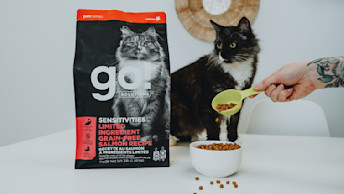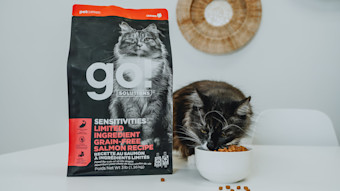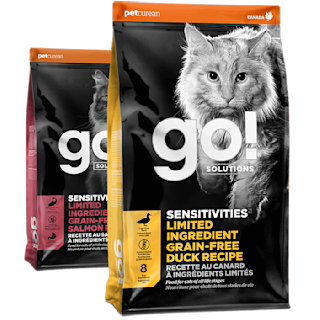June 18, 2025
Can Cats Have Tapioca?

If you’re wondering, “Can cats have tapioca?” or “Is tapioca starch bad for cats?”, you’re not alone. Many cat owners are curious about this ingredient’s presence in some cat foods. Let’s explore the role tapioca plays in cat nutrition and whether it’s something you should be concerned about.
What Is Tapioca?
Tapioca is a starch extracted from the cassava root, a plant native to South America. It’s a common ingredient in gluten-free human foods and is used as an easily digestible carbohydrate source in some pet foods. Tapioca is naturally grain-free, making it a viable alternative for pets with sensitivities to grains like wheat or corn.
Is Tapioca Safe for Cats?
Yes, cats can have tapioca in moderation. Tapioca itself is not toxic to cats, and when used appropriately in cat food, it serves a functional and nutritional purpose. However, it’s important to understand why tapioca is included and how it fits into a balanced diet for your feline friend.

Why Is Tapioca Used in Cat Food?
Tapioca serves several purposes in cat food formulations:
Carbohydrate Source
While cats are obligate carnivores and while they don’t necessarily require carbohydrates, they can easily use and even benefit from the easily digestible source of energy provided by tapioca, saving protein for producing and maintaining body tissues.
Tapioca is not a common ingredient linked to food intolerances, compared to grains. Since protein in foods is the component most commonly responsible for adverse food reactions, tapioca is a suitable carbohydrate source for pets with food sensitivities as it’s protein-free.

Recommended Solution
Expertly-Crafted Cat Food for Sensitive Stomachs
We understand how hard it is when your cat suffers from food allergies. These grain-free cat food recipes provide all the nutrition your cat needs, using as few key ingredients as possible.
View Sensitivities cat food
Additionally, tapioca contains a small amount of resistant starch which has benefits similar to fibre and can help to support digestive health.
Improves Texture
Tapioca can create a smooth texture in wet foods or provide a light, crispy texture in kibble. This is very important, as mouthfeel and the structure of the kibble and wet food helps to determine palatability, which is especially important for cats that have a tendency to be picky eaters.
So, Is Tapioca Starch Bad for Cats?
Tapioca is not bad for cats, especially when used in appropriate amounts. Cats thrive on a balanced diet rich in high-quality animal proteins and fats, and can benefit from a source of easily digestible carbohydrates for energy. Including tapioca in recipes allows formulators flexibility to create recipes with different nutrient profiles; for example, cats that may benefit from or require a diet lower in fat or protein.
If you’re ever unsure about an ingredient in your cat’s food, consult your veterinarian for personalized advice. Remember, every cat is unique, and what works well for one may not be ideal for another.


